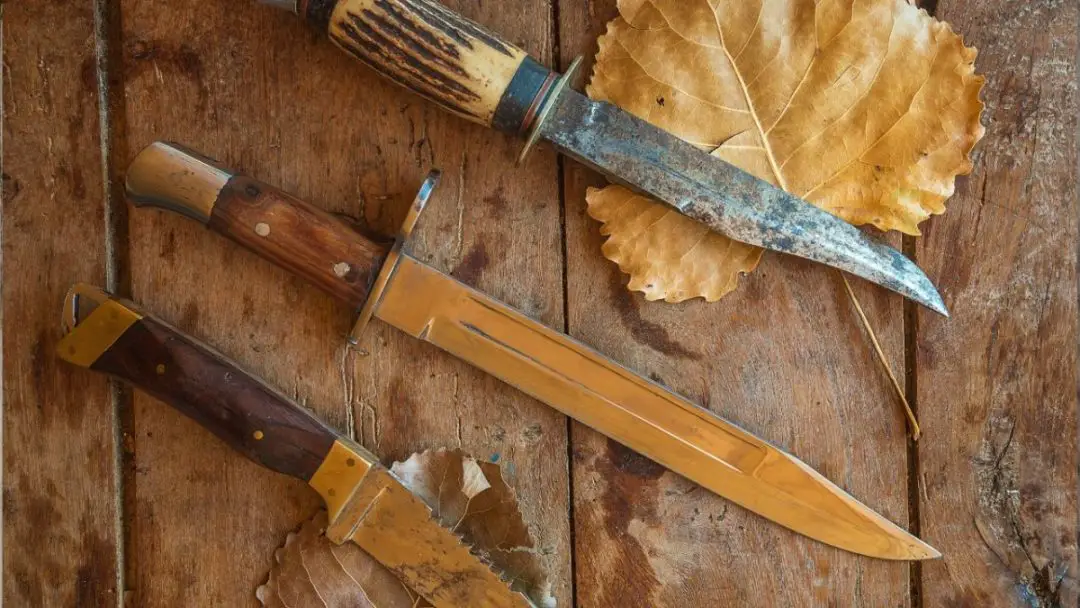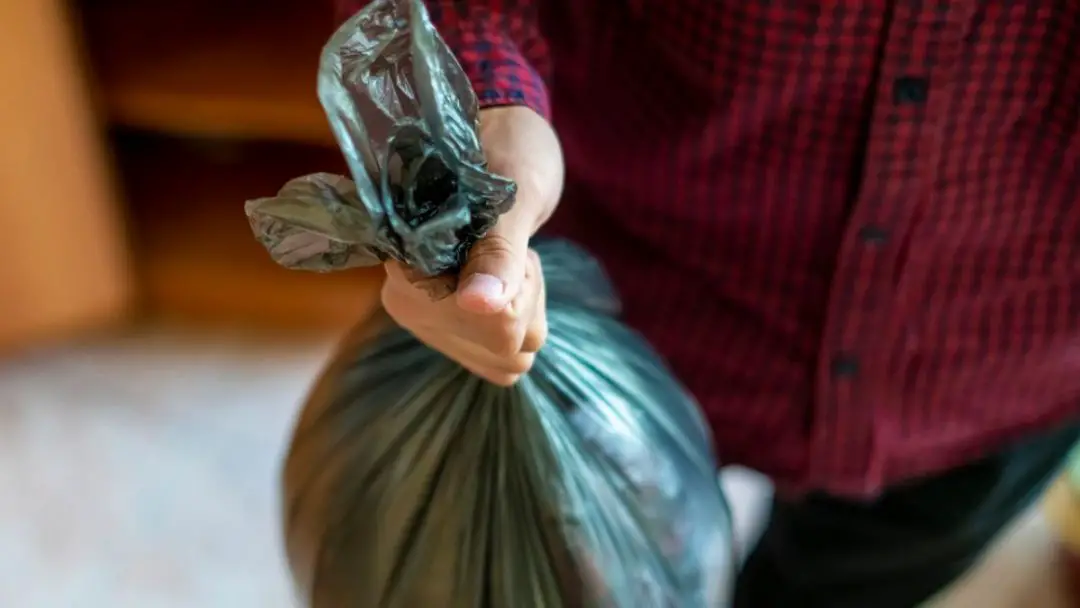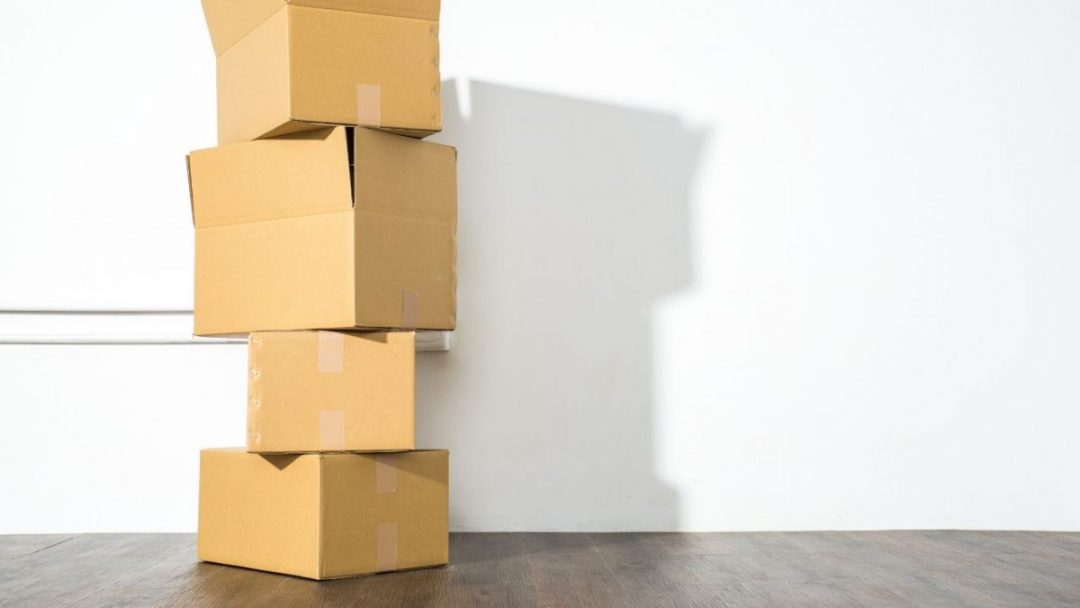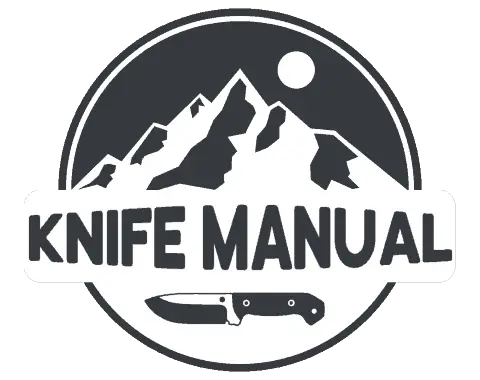
At one point or another, you will probably have a knife that you don’t use anymore, is super old, or is in bad condition and you just don’t know what to do with it. Disposing of knives can seem like a tricky process, but it really isn’t. After a ton of research and some hands-on experience, here’s how to donate or properly dispose of knives safely and effectively.
There are many options for disposing of knives such as the trash or selling them for scrap, but one of the best ways to do this is to donate them to a local thrift shop or donation center. Make sure to properly protect and cover all sharp blades before you donate or throw knives away.
Many people don’t know how to properly dispose of or get rid of their extra or unwanted knives and they end up just cluttering their up their homes and drawers with them. Luckily, getting rid of knives is not that difficult. Below I will walk you through all of the available options for getting rid of your knives, as well as how to properly package them up for safe disposal or transportation.
Table of Contents
Ways to Get Rid of Unwanted or Old Knives
There are many options when it comes to getting rid of old or unwanted knives. I’m sure that there are even more options than the ones that I mention in this article, these are just the most common and convenient. I will go further into detail for each of these ways to get rid of unwanted or old knives later in this article.
- Donate
- Sell
- Scrap
- Recycle
- Trash
When you are trying to figure out which one of these methods is best for getting rid of your knives, think about what condition they are in, whether or not you have access to donation and recycling facilities, and what the knives are made out of. The condition of your knives plays a large role in whether or not they are worth donating or should just be scrapped or thrown away.
If the knives that you want to get rid of are just unusable and unsavable, consider the scrap, trash, or recycle options, but otherwise, it is always good to donate your knives so others can benefit from them. One man’s trash can be another man’s treasure.
Also, before going forward with almost any method of getting rid of your old or unwanted knives, it is essential that you properly protect them and any sharp edges so that nobody can be harmed. Wrapping the knives in a newspaper and putting them in a sealed cardboard box is usually sufficient, but refer to my more detailed guide to packaging knives for transportation and disposal later in this article for more information.
Donate
For knives that are in semi-good condition or are at least usable, donating them is a great option because it allows other people to get some use out of your unwanted blades instead of them just ending up in the trash. In my opinion, donating knives is the best way to get rid of old or unwanted knives because it helps somebody out and it is often a quick and easy process.
Almost every place in the world probably has someplace that will except knife donations. Whether that is a Boy Scouts troop, a donation center, a soup kitchen, or even a thrift shop. Just make sure that you get in contact with the place that you plan to donate your knives to so that you can make sure that they except knife donations. Many places do, but it is always good to double-check.
An added benefit of donating your old or unwanted knives is that you can sometimes get a tax writeoff for the donation. Overall, donating your knives is one of the better ways to get rid of knives because it is helping out people and at the same time getting the blades off of your hands and to a person who will get some good use from the knives you no longer want.

Sell
This is a great option if the knives that you want to get rid of are in pretty good shape or are valuable. By selling the knives you don’t want anymore, not only do you get rid of them but you might end up with a little extra jingle in your pocket.
There are many ways to sell your unwanted knives. For example, online blade auctions, eBay, Craigslist, and other online platforms are great and you could even try local pawn shops and bladesmiths.
There are just so many options for selling your knives, that it is almost always worth trying out if the blade is in decent shape and is usable. You probably won’t make a fortune from selling your unwanted knives, but it is better than just throwing them away even if you can only get a few dollars for them.
Just look at what platforms and options there are for selling knives in your area and see if it is worth your time to try and sell your unwanted knives. In some cases, it is just not worth the time investment to sell your knives and you are better off just donating them or recycling them. Look at your situation and make the best decision on what route to take.
Scrap
This will work especially well if you have a lot of knives to get rid of, but even if you just have a few you can get a little bit of cash for your unwanted goods. This is essentially the same thing as just selling your knives, but is a great option if the knives you are trying to get rid of are in pretty bad shape and they are just worth what the material that they are made of is worth.
To sell your knives as scrap, you can list them on online marketplaces, find a local blade or knifemaker, or go to your local scrapyard. The better of these options, in many cases, is to find a local blade or knifemaker to buy your knives from you as scrap. They will often give you the best price because they will know what the knives are actually worth and will repurpose the materials for other knives and projects.
It’s not going to be one of the most lucrative transactions ever, but it is a lot better than just throwing them away because you might end up with a little bit of cash. This method of getting rid of unwanted or old knives works best for knives that are made of nice materials or if you have a bunch of blades.
Recycle
If for some reason you are unable to donate, sell, or scrap your unwanted or old knives, the next best option is to recycle them. For most people, this is a really simple and straight forward process that can be done really fast.
If you have a recycling service or pick up at our house, you can properly package up the knives that you want to get rid of so they won’t hurt anybody and send them off with the rest of your recycling. Make sure to take the proper precautions to make sure that the knives that you recycle are fully covered and protected. I explain exactly how to do this later in this article.
Just make sure there are no exposed sharp edges that could harm someone, and leave it in a separate container next to your recycle bin. If you don’t have a recycle service come and pick up at your home, there are usually recycling facilities nearby that can except your knives. Just make sure to cover up all of the blades so nobody gets hurt when they are interacting with your recycling bin or taking your delivery at a facility.
Trash
As always, there is the option of just throwing your knives in the trash. But this is one of the methods of knife disposal that you should use only after you have tried the others and they have not worked out. Also, always make sure to cover and properly package all the knives that you throw away so that nobody gets hurt when handling the trash.
To dispose of knives via the trash, it is pretty simple and self-explanatory. Simply package up the knives so no sharp blades are exposed and either take them to the trash can in your house or to the nearest dump. Most dumps will not have a problem with you disposing of knives as long as they are properly covered and protected so as not to hurt anyone.
Again, this is one of the least favorable methods to use, at least for me, because nobody else is able to use the knives and you don’t make any money from them. But just throwing your unwanted or old knives away would totally make sense if they were so messed up that they were unusable and selling them for scrap wasn’t worth it.

How to Properly Package Knives for Transportation or Disposal
As I have mentioned many times in this article, properly packaging and protecting the knives that you are trying to donate, sell, transport, or dispose of is VERY important. Not only will it stop you from accidentally hurting yourself while moving them, but it will also prevent others from harming themselves as well.
This doesn’t have to be a super difficult and tedious process either, there are many different methods that work and you can even improvise if none of these work for you. By just taking a few minutes to properly package and cover your knives before disposing of them, you are potentially saving someone from injuring themselves on an exposed blade.
Alright, enough chit chat, here are a few of the best ways to properly package and cover knives before you transport them or dispose of them. Remember, this doesn’t have to be complicated, just make sure that the blades are really well protected and won’t hurt anyone who comes into contact with them.
Bubble Wrap Method
Out of all the materials that you can use to cover up and protect a knife, bubble wrap is one of the best and most effective. To use bubble wrap to cover up a knife blade for transportation or disposal, get a piece of bubble wrap and place the knife in the center of it.
Next, wrap the bubble wrap around the knife blade carefully so you don’t cut yourself in the process. Make sure that the bubble wrap is completely covering the entire blade so that nobody gets hurt when handling the knife.
If you need to because the bubble wrap is not staying on the blade, you can use rubber bands or some tape to hold the bubble wrap in place. By the time you are finished wrapping your knife in bubble wrap, it should have at least two layers and should be nice and secure so that the wrapping doesn’t come off.
After your knife is nicely covered in bubble wrap to prevent harm to yourself or others, place it in a cardboard box and securely tape the top closed. Label the box “Sharp Objects” or something along those lines, and you are good to go. Now you can safely transport, donate, recycle, sell, or throw away your knife.
Newspaper Method
Following along the same lines as the bubble wrap method of protecting a knife blade for transportation or disposal, the newspaper method does essentially the same thing but it is great if you don’t have access to bubble wrap or just want another option.
To use the newspaper method to protect your unwanted or old knives that you are about to get rid of, place a few layers of newspaper on a flat surface and put the knife in the center of the newspapers. Carefully wrap the blade of the knife in the newspaper and add more layers as needed so that the blade is nice and protected.
Use rubber bands or tape to keep the newspaper in place as needed. Once you are done and your knife is nicely covered up in the newspaper so nobody can hurt themselves on the blade, place the entire knife package into a cardboard box. Label the box “Sharp Objects” and you are good to go.
The newspaper will provide a nice layer of protection from the blade for you and anyone that handles the knives, and the box is just an extra precaution. You are now good to go dispost of your knife or transport it to a donation center or buyer.
Cardboard Method
The cardboard method is a really handy one to know because cardboard is almost always available and it is a nice and simple method to protect your knife for transport or disposal. The main objective of the cardboard method is to create a sort of sheath for your knife to be housed in.
To do this, simply cut out or fold some cardboard into a rough square shape. The square of cardboard doesn’t have to be perfect, just make it a little bigger than the length of our knife and roughly the right shape. Make sure that the cardboard that you are working with is nice and thick so that it will provide protection from the sharp blade of your knife.
Next, take two opposite corners of the cardboard square and bring them together so that it forms a triable of cardboard. Take some tape and tape all of the edges of the triangle, but leave one side open.
If you would like, wrap your knife in some bubble wrap or paper before continuing on with the cardboard method for some extra protection. Next, insert the knife into the sheath of cardboard through the open end of the triable and tape the opening shut. Place the entire cardboard sheath with the knife in it into a cardboard box. Seal the box and label it “Sharp Objects”.

Plastic Bottle Method
Another great option and way that you can protect yourself and others when you are disposing or transporting knives are with the plastic bottle method. This is a really simple method and all you need is a plastic bottle, a cutting tool, some tape, and a cardboard box.
Take the plastic bottle and, using your cutting tool of choice, make an incision near the top that is about a half-inch larger than the width of your knife. Take your knife that you want to get rid of and slip it through the slot in the top of the bottle. Once the knife is inside the bottle, place a small piece of tape over the opening and place the entire bottle into a cardboard box for some extra protection. Label the box “Sharp Objects” or something similar.
This method is great if you are recycling or throwing away your old or unwanted knives. If you are donating, selling, or scrapping your knives, I do not recommend this method. While it will do a fantastic job of protecting your knife bladed from hurting anyone, it will be a plain for the buyer or people at the donation center to remove the blade from the bottle.
Other Methods
While the methods of protecting your knives for transportation or disposal that I laid out above will work in almost any scenario, there are a few other options for those people that don’t have access to the materials mentioned above or are just wanting to try a different method.
If the knife that you are getting rid of is completely ruined and you are not donating or selling it, you can carefully pound the cutting edge of the knife with a hammer. It won’t take much to round off the sharp edge and make it so that it can’t hurt anyone once you sell it for scrap or put it in the trash. Just be careful with this method because one little slip up could cause you some injury when you are dulling the blade with a hammer.
You could also try putting some thick duct tape over the blade. If you decide to do this, I would also wrap it in something a little bit stronger like cardboard or bubble wrap because the tape isn’t going to stop a sharp blade from hurting someone if they come into contact with it.
There are probably many more options and methods out there for making sure that a knife can’t hurt anyone when you are transporting it or disposing of it. Just make sure that the blade is completely covered and cant cut anyone, and it is always a good idea to place the covered knife into a labeled cardboard box just for an extra layer of protection.
Where is the Best Place to Donate Knives?
There are many places in almost every city that will take knife donations. Some of the most common places to donate knives are thrift stores and donation centers.
One of the most popular places, and the one that most people have the most luck at, is Goodwill or other charitable donation centers. Just look around the area where you live and there is bound to be a Goodwill or something similar nearby.
Other options for places to donate knives are Boy Scouts, Salvation Army, DNR safety instructors, local knife shops and knifemakers, thrift shops, and really any place that excepts donations. Just be sure to check and make sure the place that you intend to donate your old or unwanted knives to excepts knife donations. Some places do not, so it is always good to check before you show up with a box full of blades.
Personally, my favorite place to donate knives to is Goodwill. It is a simple and easy process and I know that my knives are going to someone else who will get a lot of use out of them. While this might not be the best option for everyone, it is for me and there are Goodwill stores, or their equivalent, in almost every large city.
Just make sure that you trust the place that you are donating your knives to and PLEASE check with them ahead of time to make sure that they except knife donations. The potential tax write-off from making a donation, as well knowing that someone else is able to enjoy using your knives, just makes donating your old or unwanted knives a really great option if you are going to be getting rid of old or unwanted knives anyways.
Why Would You Want to Get Rid of a Knife?
There are many reasons why someone would want to get rid of a knife. It really depends on the person and what situation they are in. For some people, they want to get rid of a knife because they no longer use it and it doesn’t fit their needs anymore, others are trying to pair down their vast collection of blades, and still more people have thousands of other reasons.
While there is no single answer for why someone would want to get rid of a knife, some of the most common reasons are to pair down collections, the knives are just old, they don’t use them anymore, they inherited them, they just want some fresh and new knives, and many more. I could go on all day.
Again, it really depends on your situation. The reason why you would want to get rid of a knife might be totally different from someone else, or they might be the same. Who knows. Just if you find yourself needing to get rid of a knife, just remember to do it properly and make sure to cover and package it up so no one gets hurt.
Conclusion
Basically, there are many reasons why you would want to get rid of a knife, and instead of holding on to it and letting it clutter up your house, there are many ways for you to donate it, sell it, or throw it away. It is really quite simple, as long as you take the necessary steps to cover the blade and properly dispose of it.
While my obvious favorite method for getting rid of a knife is by donating it, there are other options like selling it, selling it for scrap, recycling it, or just throwing it into the trash. It really depends on the quality and condition of the knife that you are trying to get rid of to decide which one of these methods is the best.
After you have decided what to do with the knives you no longer want, always remember to properly package and cover them for transportation or disposal. Almost any method will work just fine, as long as the blade is completely covered so it can’t hurt anyone who comes into contact with it.
And that’s pretty much how to properly dispose of a knife that you no longer want or is just old and unusable. It is really quite simple and is a easy and quick process that you will wish you had done sooner.
